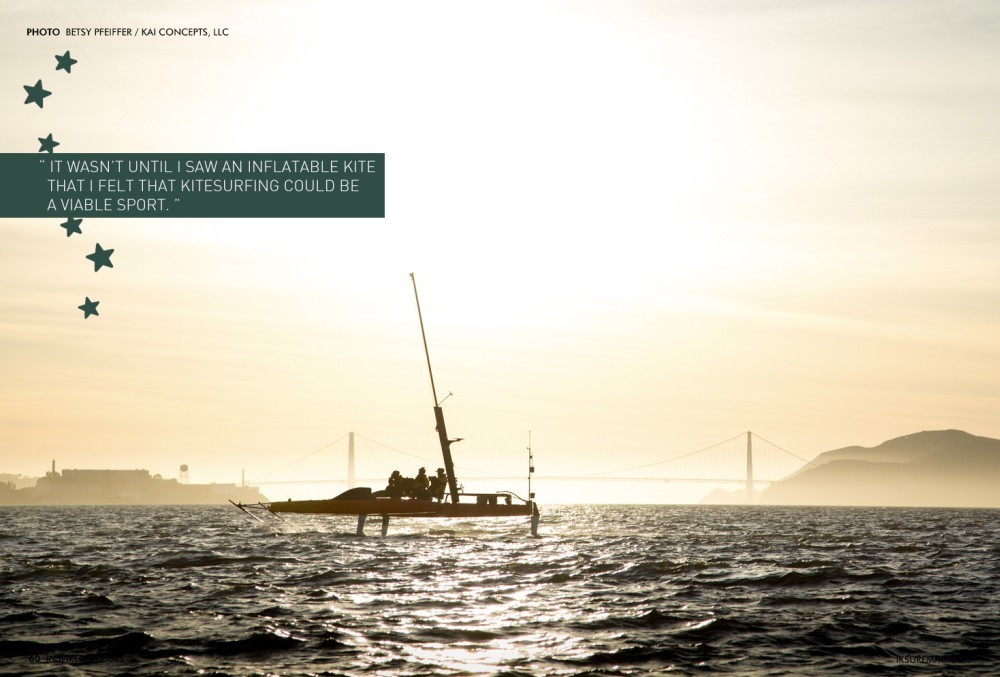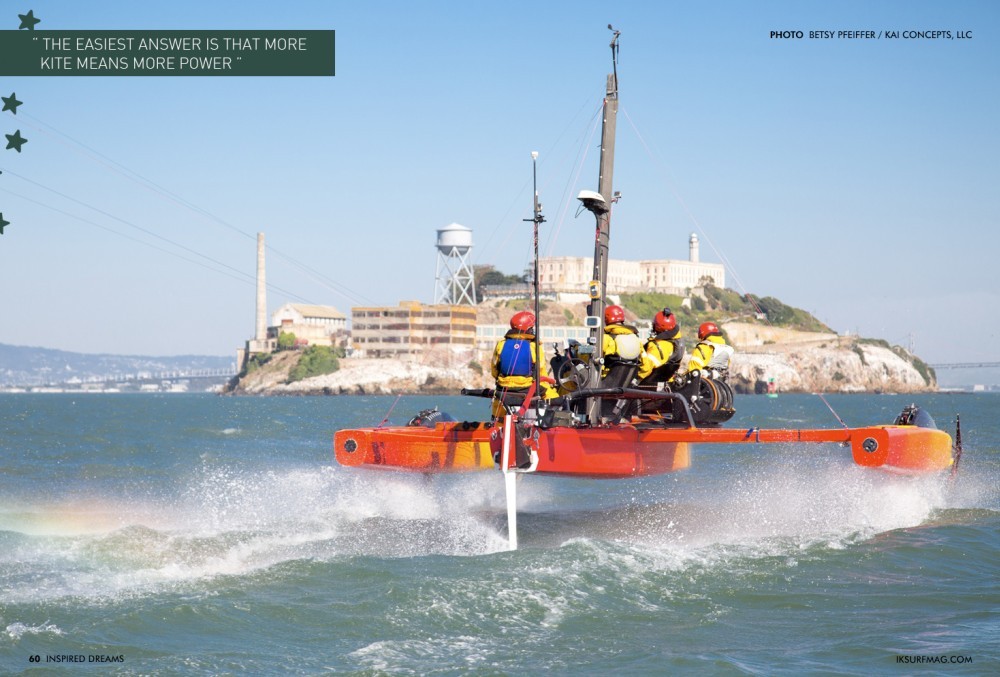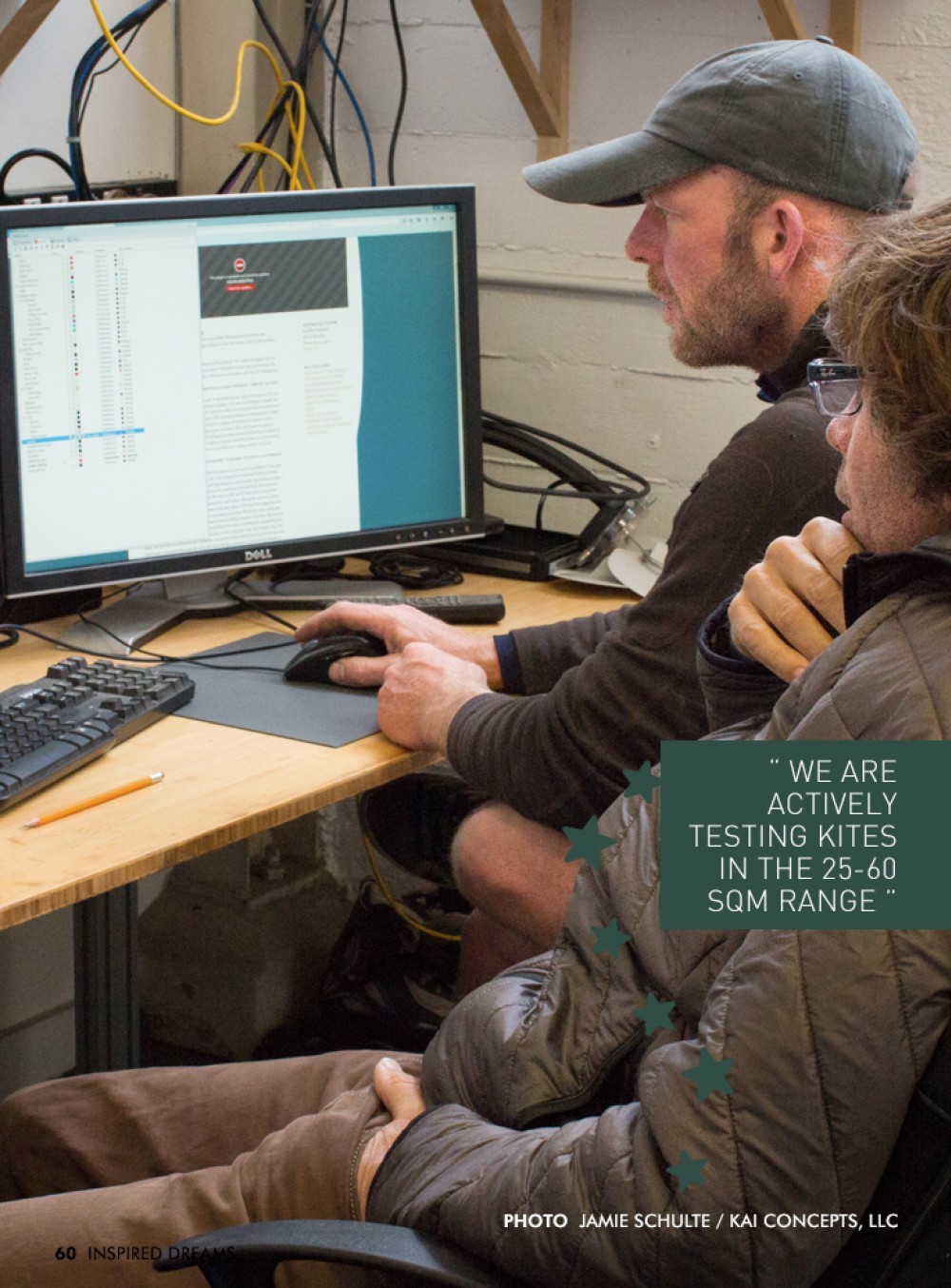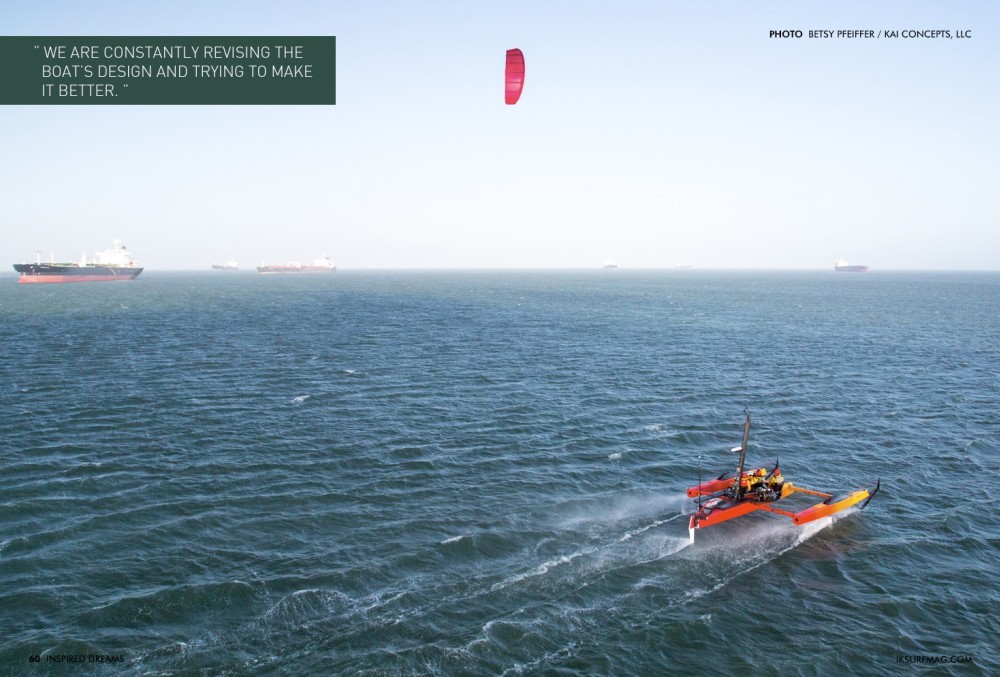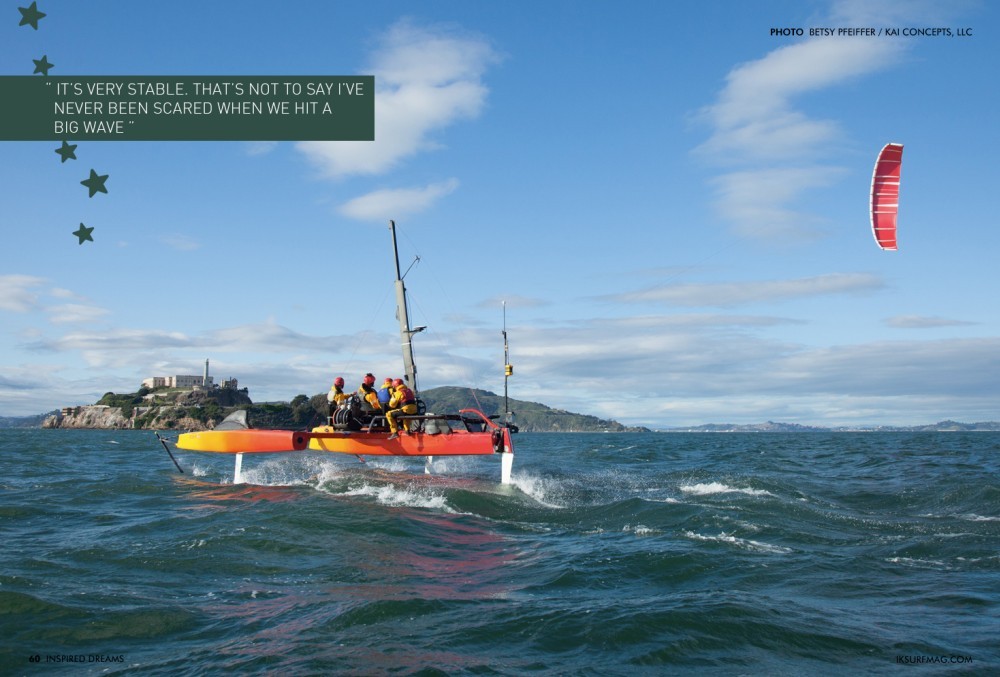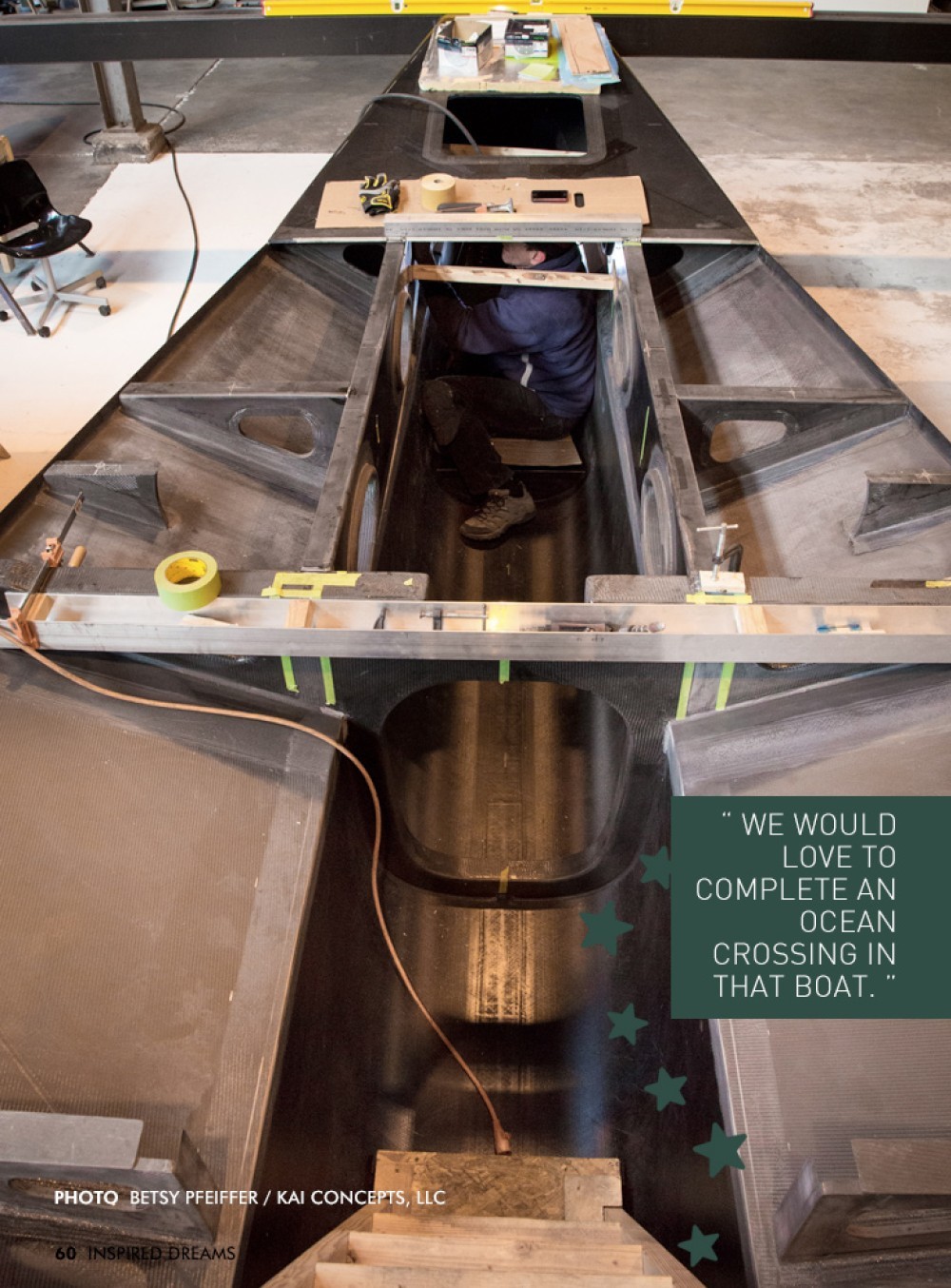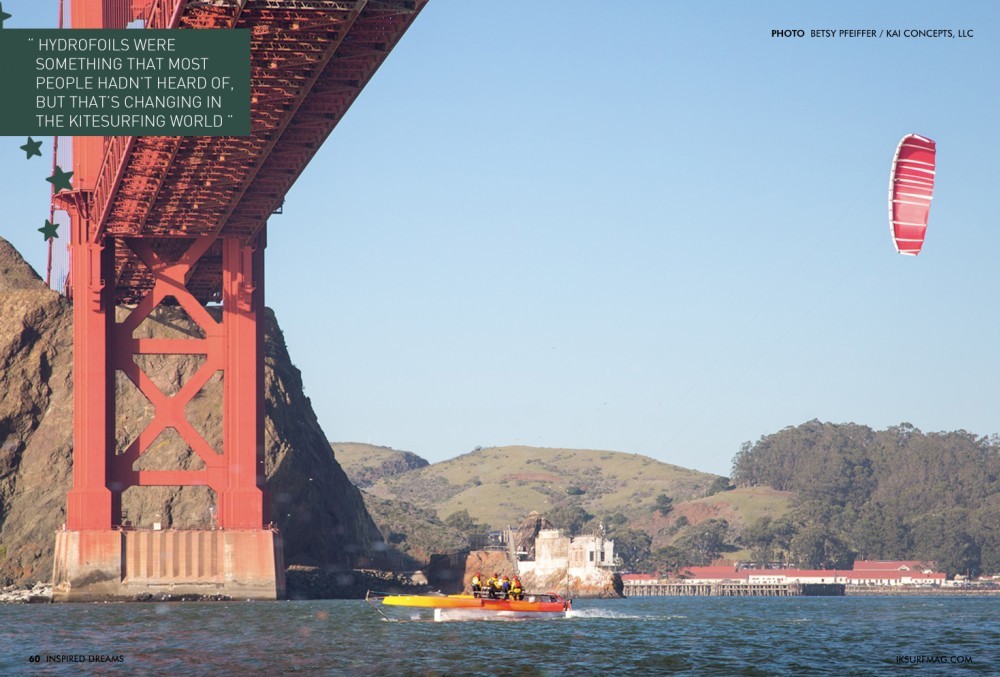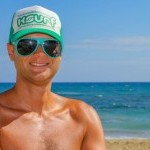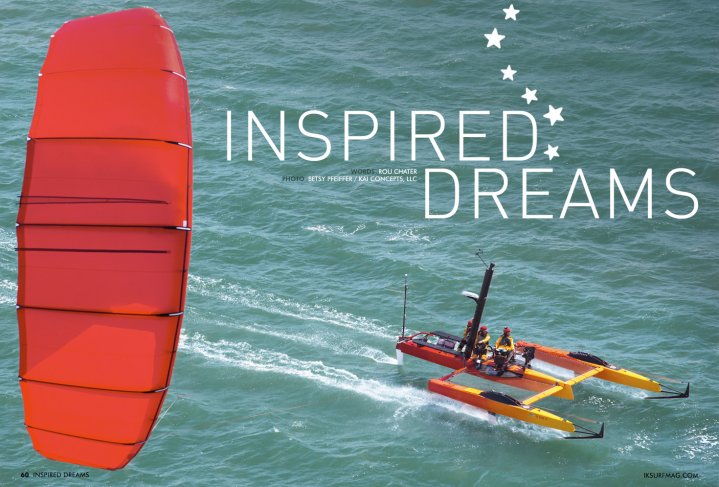
Inspired Dreams
Issue 60 / Tue 6th Dec, 2016
Rou Chater talks to Don Montague, the mastermind behind the Kiteboat Project, when all the polar ice melts, you’ll want Don on your team that’s for sure!
If there is one thing that creates a massive buzz on our website, it is the Kiteboat built by Kai Concepts. We’ve had hundreds of thousands of views on the videos, but there isn’t much information out there about it, until now. We sit down with Don Montague, the mastermind of the project to learn a little more!
Hi Don, for people who aren’t familiar with your exploits, can you give us a little bit of your background and how you got into kites?
I began sailing at the age eight, and started experimenting with wind propulsion early on; putting a sail on my skateboard, etc. In my teens and early 20s, I focused on windsurfing; I won my first competition in 1983, the Greenpeace Molokini Crossing, and I raced professionally and worked as a sail designer for Gaastra until 1995. After that, I joined Robby Naish and Pete Cabrinha at Naish Sails Hawaii.
The first time I remember seeing power kites in action was 1992 when I accompanied Cory Roeseler on a test of his KiteSki setup. I was impressed, but it wasn’t until I saw an inflatable kite that I felt that kitesurfing could be a viable sport. In 1995, Manu Bertin brought me an inflatable kite from Bruno Legaignoux, and that kite was possible to water-relaunch easily, which made a huge difference. In 1996, I began to develop kites with Naish Sails Hawaii, which released its first commercial kite, the AR3.5, in 1998. I competed in kitesurfing competitions until 2003 and continued to work with Naish Sails Hawaii until 2006.
You used to live on Maui, what drove you to San Francisco and the Bay area?
In 2006, I co-founded a high-altitude wind power company in the Bay Area, Makani Power, seeking to generate clean energy using kites. Makani has since been acquired by X (formerly Google[x]), and I’ve started a new R&D company, Kai Concepts, also based in the Bay Area. The Kiteboat Project is part of Kai Concepts, as are my new electric foiling projects, like the Jetoiler. I still go back to Maui often; it’s a beautiful place, and I have many friends there, but the Bay Area is where the majority of my work is these days.
You’ve been famous for designing large kites ever since the huge 30m kite that Naish put into production for consumers years ago, why the fascination with enormous kites and what are the challenges when it comes to designing them compared to regular kites?
I think the easiest answer is that more kite means more power. Now, that’s not strictly true, because a more efficient small kite could provide more power than an inefficient big kite; as we’ve seen in the trend toward foil kites. However, the primary reason to scale up a design is to go faster than you have been going, or to go in lighter wind, or with a bigger rig.
As the kite size increases, the load on everything; the boat, the lines, the kite controls, the kite itself, increases. I think the biggest challenge is to figure out how to deal with those larger loads in a controlled way. You want to be able to scale up the kite without making it unsafe to fly, and without losing your designed kite shape to unexpected material deformation.
What’s the size of the kite that the Kiteboat uses at the moment, or are there several sizes for different wind conditions?
Yes, we use different-sized kites for the Kiteboat, depending on the wind conditions. We are actively testing kites in the 25-60 sqm range, and we have used kites up to 101 sqm in the project in the past.
Where do the kites get made?
We design the kites in-house or in conjunction with a design consultant and manufacture them overseas, like all the major kitesurfing companies.
The boat itself is starting to look like something from the future, who’s behind the tech going on there, can you explain how the hydrofoils work autonomously and the set up with the steering console which revolves, that thing looks insane, like something from the Millennium Falcon!
Thanks! We are constantly revising the boat’s design and trying to make it better. The boat uses wands that trail from the front of each ama (hull in layman's terms) to mechanically sense waves. As the paddles move, they push or pull a flap on the T-foils that adjusts the shape of the airfoil section of the foils. The crew can also change the foil uprights by pressing buttons on the console: to set the overall “ride height” of the boat or to override the boat’s automatic adjustment. We are also able to set up the boat to work with electronic sensors instead of mechanical sensors on the front amas if we choose.
The rotating control chair is designed to allow the kite flier to face the kite at all times. It also takes the majority of the load from the kite lines so that the kite flier can “feel” the kite without tiring as quickly. We decided to make the helmsmen’s chairs rotate too in order to make it easier for the crew members to communicate.
Our in-house design and build team is led by Joe Brock, and we have collaborated with a few outside consultants: marine architects, mechanical and electrical engineers.
How many crew does it take to sail the boat?
We need a minimum of two people, one to steer the kite and one to steer the boat, but our usual crew is three people, and we have taken out as many as six people before.
What is the most challenging thing about it, or is it fairly easy to sail?
The current prototype works very well. We have been dialling in the foil and kite control systems for years now, and a person experienced in kiting or sailing should be able to step on and steer it. That said, it’s a sport unto itself, and no one knows the Kiteboat as well as our team. The hardest part for newcomers is probably the kite launch and retrieval.
Have you guys ever crashed or wiped out in it?
One of the great things about using a kite with a foiling boat is that the kite is pulling on the centre of gravity of the boat, and there is no heeling or pitching moment to tip the boat over. It’s very stable. That’s not to say I’ve never been scared when we hit a big wave, but we have never crashed into anything or flipped it.
What’s the end goal with the boat, are you seeking to make it commercially available, or is it more to experiment with alternative propulsion systems?
We are developing a larger version of the Kiteboat that can go offshore; we would love to complete an ocean crossing in that boat. The current boat has been useful in developing the systems we have now, and, yes, we’ve also used it to experiment with electric power, so R&D is where our focus is now.
It generates a load of interest amongst our readers; your videos always seem to be very popular, what do you think is so appealing about the project?
I think it’s a mixture of many things. The Kiteboat is unique, and a lot of the things we’ve filmed over the years have looked pretty extreme. Many people are fascinated by the size of the kite and the speed of the boat. For a long time, hydrofoils were something that most people hadn’t heard of, but that’s changing in the kitesurfing world, and that’s generated a lot of enthusiasm for our project as well.
Are there limits to what the boat can do, sea states, wind strengths, etc.?
Our current boat is optimised for use in the San Francisco Bay. It does extremely well in chop, but it doesn’t love larger waves. Using different kites gives us a pretty large wind range to work with, but we are aiming for high performance in winds less than 20-25 knots.
Do you ever just go kitesurfing?
Of course! It’s a great way to test out new kite designs too.
Cheers Don thanks for taking the time!
Videos
By Rou Chater
Rou has been kiting since the sports inception and has been working as an editor and tester for magazines since 2004. He started IKSURFMAG with his brother in 2006 and has tested hundreds of different kites and travelled all over the world to kitesurf. He's a walking encyclopedia of all things kite and is just as passionate about the sport today as he was when he first started!




